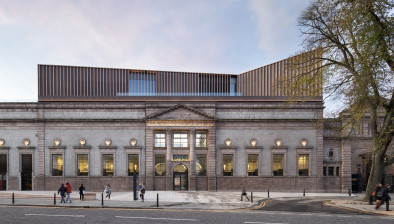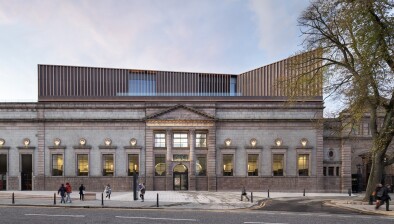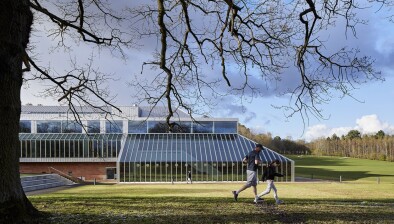Aberdeen building showcased at world’s biggest architecture festival
Gray’s School of Art in Aberdeen was under the spotlight last week, as part of the world’s biggest architecture festival.
Modernist buildings on the east coast of Scotland are the theme of new research linked to the Venice Architecture Biennale, an international architecture showcase held every two years.
Supported by the Scottish Government, Creative Scotland and British Council Scotland, the Scotland + Venice 2014 project is highlighting some of Scotland’s most notable modernist buildings at this year’s biennale.
The project, named ‘Past + Future’, centres on the modernist architecture style as applied in Scotland between 1950 and 1970. Four architect-led teams, under the direction of award-winning practice Reiach and Hall, have been participating in a combined month-long residency in Venice, linked to the British Pavilion.
The final of four teams to present their research, a group including lecturers and students from the Scott Sutherland School of Architecture and Built Environment at Robert Gordon University has been in Venice, with an event last Friday to discuss their paper.
Entitled ‘Outsiders’, it examines: Gray’s School of Art, Aberdeen by Michael Shewan (1966); the competition entry for Kirkcaldy Crematorium by Alison and Peter Smithson (1954); and Andrew Melville Hall, St Andrews by James Stirling (1967).
It is one of a series of specially-produced newspapers being distributed in Venice.
Over the course of the month, all four teams have been engaging with the international architecture community. Invited speakers have been using the research to generate new ideas and thinking about architecture in a modern Scotland at four consecutive weekly events in Venice.
The initial research and outcomes of the debates in Venice will be brought back to Scotland in an exhibition and events programme curated by Architecture and Design Scotland at The Lighthouse in Glasgow in February and March 2015.
Cabinet secretary for culture and external affairs, Fiona Hyslop, said: “‘Past + Future’ seeks to trace the evolution of a changing post-war Scotland by reflecting on modernity in Scottish architecture, the values that it sought to represent, and the optimism and motivation of architects to improve the lives of the ordinary citizen.
“The four teams involved have explored how the architectural heritage of this period became an integral part of the vision for post-war change in different parts of Scotland.
“The Scotland + Venice project serves as a valuable record of developing technologies and social and cultural attitudes and intends to open up debate both at home, and further afield, about what a modern architecture was and what it might be in the future.”
Amanda Catto, portfolio manager for visual arts at Creative Scotland, said: “Creative Scotland is delighted to be working with British Council and the Scottish Government in commissioning Reiach and Hall to provide Scotland’s contribution to the prestigious Venice Architecture Biennale with an examination of Scotland’s modernist past.
“Through its research this project aims to spark a debate about architecture in Scotland, using recent histories – both national and international - to inform and inspire future thinking.”
Neil Gillespie, design director at Reiach and Hall, added: “Group 4 are currently extending the ambition and direction of the Scotland + Venice presence in 2014. In their research before leaving for Venice, Group 4 looked at three architectural outsiders, James Stirling, Michael Shewan and Peter and Alison Smithson through three buildings, Andrew Melville Hall 1968, Gray’s School of Art 1966 and Kirkcaldy Crematorium Project of 1954.
“Counter to the prevailing orthodoxy of Scandinavian Modern prevalent in Scotland in the 1950s and 1960s with its ”strong sense of the collective social project” the architects and the buildings researched by the group in brilliant, diamond hard text, drawings and models reveal an intellectual and architectural autonomy and intelligence that escapes any reference to national boundary or parochialism.
“The group have ambitiously and provocatively demanded a level of commitment and engagement that is a new benchmark for Scotland + Venice. Their event on October 24 in the Ludoteca involving guests, Emmanuel Petit, Sven-Olov Wallenstein, Dirk van den Heuvel and Ellis Woodman is testament to their uncompromising stance.”














